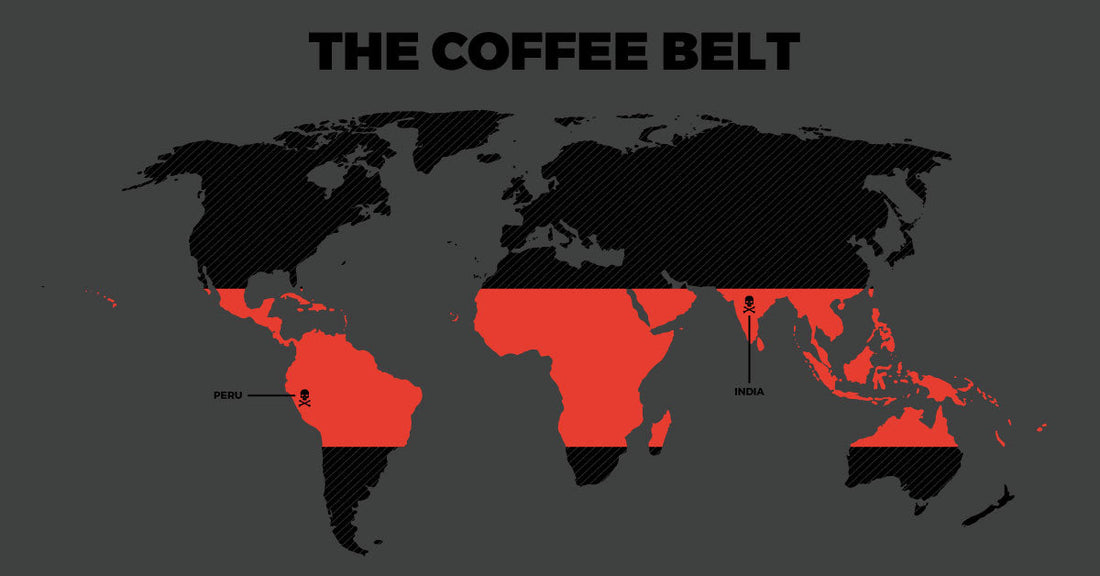
Where is coffee grown?
Coffee TalkWhat countries make up the Coffee Belt?
Have you ever wondered why you can’t get American-grown coffee? Well, simply put — they aren’t in the right place. More than anything else — tradition, commerce, culture — what more matters is location, location, location.
Located between the Tropics of Capricorn and Cancer, horizontally along the equator, is a strip of land known as The Coffee Belt, also known as The Bean Belt. These places all have a similar climate to the origin of the coffee bean — Ethiopia.
The keys to growing coffee plants are a rich soil, mild temperatures, lots of rain, a dry season, and shaded sun. This is what makes places like India, Peru, and Costa Rica ideal for growing coffee. The Coffee Belt strings through 70 countries that are known for tropical climates and rich environments, full of lush vegetation and optimal growing soils.
A lot of the countries in the Coffee Belt are also part of the Pacific Ring of Fire, whose volcanic activity contributes to the richness of the soil that coffee plants thrive in. When you have all of these factors mixed together, it creates an optimal environment for coffee plants to grow and thrive.
Almost all of the coffee in the world is produced between the Tropics of Capricorn and Cancer — 70 percent of the world’s coffee supply are Arabica beans, and the other 30 percent are Robusta beans (Death Wish uses a combination of the two, sourcing Fair Trade beans from India and Peru).
Since these conditions all need to be present to make the rich beans we all want in our coffee, it is no surprise that only 2 out of our 50 states can grow coffee — California (which has a very small but growing coffee market) and Hawaii. Hawaii is the only state that produces coffee on a commercial level, but they are still not big producers compared to the rest of the world. Puerto Rico actually grows the most US produced coffee, but they don’t really export it. Over a century ago, however, Puerto Rico not only produced a lot of the world's coffee, but they also made some of the best — and they could be trying to return to that legacy.
There’s no doubt that the Coffee Belt plays a role in conversations surrounding climate change. Studies have shown that coffee-growing zones may be shrinking because of deforestation, droughts, fungi, diseases, and more, which could have an affect on the world’s coffee supply. Now, countries are developing plans to conserve their wild coffee resources to keep the coffee industry thriving.
Related: Why Fair Trade is so important to us
